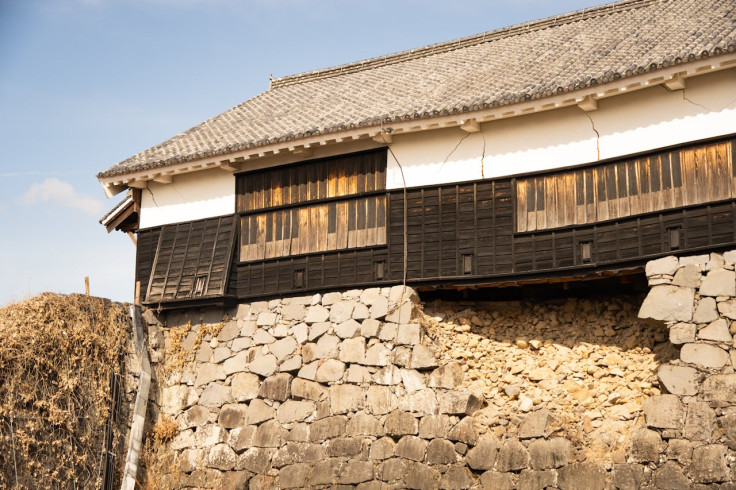Honshu Japan Earthquake Revives Viral 'Asian Baba Vanga' 2025 Prophecy — Was This What Ryo Tatsuki Foresaw?
Magnitude 6.0 earthquake hits off Honshu's east coast on 4 October 2025

A magnitude 6.0 earthquake struck off the east coast of Honshu, Japan, on 4 October 2025, according to the German Research Centre for Geosciences. The tremor, recorded at a depth of about 10 kilometres, was felt across parts of eastern Japan. No casualties, damage or tsunami warnings were reported, though residents described buildings shaking and some transport being briefly disrupted.
Although moderate in impact, the event has reignited public attention around a prediction made in a manga by Ryo Tatsuki, often referred to as 'Japan's Baba Vanga'. The forecast, published in an updated edition of her series The Future I Saw, suggested a major earthquake and tsunami would strike Japan in 2025. The Honshu tremor has led some to speculate whether it represents a delayed or partial fulfilment of that vision.
At the same time, scientists emphasise that earthquakes cannot be predicted with precision. They caution against giving weight to claims of foresight, warning that speculation risks spreading misinformation and fuelling public anxiety.
Inside the Tatsuki 'Prophecy'
Tatsuki's manga, which gained renewed circulation in 2021, describes the sea floor between Japan and the Philippines cracking and unleashing a tsunami three times taller than that caused by the 2011 Tōhoku disaster. The passage dated 5 July 2025 spread widely on social media, sparking anxiety and cancellations of travel plans, particularly from neighbouring East Asian countries. Local officials were forced to issue reassurances.
At the height of the speculation, Tatsuki reminded readers that she did not claim to be a prophet and urged people not to panic, according to Newsweek. Nonetheless, her reputation as an artist whose past illustrations appeared to anticipate real events meant the July forecast drew unusual levels of attention.
Honshu Quake Rekindles Prophecy
The Honshu earthquake did not match the scale or timing described in Tatsuki's story, but its occurrence in the same year has revived comparisons. Social media commentary has highlighted similarities of location and theme, with some framing the tremor as a belated realisation of the manga's vision.
Seismologists reject such claims. The Japan Meteorological Agency reiterated after the quake that seismic monitoring provides probabilities and warnings once activity is under way, but not predictions of precise dates. Researchers said the Honshu tremor was consistent with expected activity along Japan's many fault lines.
Scientists Dismiss Link
Japan sits on the Pacific 'Ring of Fire', where seismic activity is both common and closely monitored. The Nankai Trough, in particular, has been identified as a likely site of future large quakes, but the timing of such events cannot be foreseen, according to The Daily Jagran. Geoscientists argue that associating natural tremors with prophetic claims risks spreading misinformation and eroding trust in official warnings.
Japanese lady getting warning of an earthquake in advance pic.twitter.com/3RdabLflnE
— Sarcasm On Point (@Sarcasm_Point) October 4, 2025
Looks like no major damage, which is great. No tsunami either, right?
— Hana (@Haru_Hana_39) October 5, 2025
Japan always handles these with unreal preparedness. respect 🇯🇵
— Biscuit (@biscuitweb3) October 4, 2025
•Magnitude 6 is considered strong enough to cause structural damage, especially to older or poorly built structures, and may be felt over a wide area.
— MemeMerica (@MericaMeme19362) October 4, 2025
•Honshu is Japan’s largest island and includes major cities like Tokyo, Sendai, and Fukushima.
•Japan is seismically active,…
Science Over Prophecy
The Honshu quake demonstrated how a routine seismic event can be reframed through the lens of prophecy. While some members of the public continue to draw links to Tatsuki's manga, experts stress there is no evidence of foresight, only coincidence.
For communities along Japan's coastline, the lesson lies in preparation rather than prophecy. Experts emphasise that readiness and reliance on scientific monitoring remain the most effective means of reducing risk from future seismic activity. In a country where tremors are a fact of life, the October earthquake underlined once again that vigilance and resilience are more reliable than speculation.
© Copyright IBTimes 2025. All rights reserved.





















